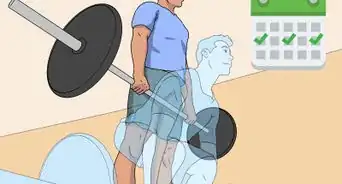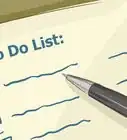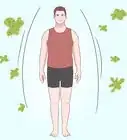This article was co-authored by Laura Flinn. Laura Flinn is a National Academy of Sports Medicine (NASM) Certified Personal Trainer, USA Olympic Weightlifting Sports Performance Coach and Certified Fitness Nutritionist, with an additional qualification as a TRX Suspension Trainer. Laura runs her own personal training program based in the San Francisco Bay Area and specializes in topics such as weight loss, muscle growth, cardiovascular training, and strength training.
There are 11 references cited in this article, which can be found at the bottom of the page.
wikiHow marks an article as reader-approved once it receives enough positive feedback. This article received 80 testimonials and 95% of readers who voted found it helpful, earning it our reader-approved status.
This article has been viewed 14,144,585 times.
Belly fat is associated with many health issues and diseases, such as cardiovascular disease, diabetes, and cancer. Specifically, it's the deepest layer of belly fat that poses health risks. That's because these "visceral" fat cells actually produce hormones and other substances that can affect your health.[1] There are many dangerous and ineffective gimmicks about how to lose belly fat. While there is no "magic bullet" that will target abdominal fat in particular, this article will explain what causes an expanding waistline and how you can make that spare tire go away.
Steps
Jump-starting Your Metabolism
-
1Eat breakfast. It might seem counterproductive to eat if you're trying to lose weight, but studies show that eating breakfast within an hour of waking up keeps your insulin levels steadier and your LDL cholesterol levels lower.[2]
- Choose a protein: eggs, beans, peanut butter, nuts, lean meat.
- Choose a fiber: oats, fresh fruit, leafy green vegetables.
- Minimize refined sugar: Avoid sugary cereal, pancakes, pastries, instant oatmeal
- Oats and other high-fiber carbs maintain healthy blood sugar levels, making it easier to lose weight.
-
2Decompress. Research indicates that the secretion of cortisol (a hormone your body produces during times of stress) is correlated with an increase in belly fat.[3] Some strategies for combating everyday stress:
- Most people need at least 7 hours of sleep every night. Stop using screens, such as computers and tablets, thirty minutes before bedtime to ensure the best quality of sleep.[4]
- Set aside time to relax. Even if it's only 15 minutes on your lunch break, find time to simply close your eyes, breathe deeply, and forget your worries.
- Keep anything that stresses you away from where you sleep as much as is practically possible. Keep your workspace and bedroom separate. Resolve to leave your worries behind as soon as you step into your bedroom.
Advertisement -
3Aim to take 10,000 steps a day. In one study where men reduced their daily steps from about 10,000 to less than 1,500 (without changing their diet), their visceral (belly) fat increased by 7% after just 2 weeks.[5]
- Try to walk everywhere within a reasonable distance. Walk to work, school, or the grocery store if possible.
- Get a pedometer and try to increase the number of daily steps you take.
- Take stairs instead of elevators; walk instead of driving.
- Stand up and walk for 30 steps every 30 minutes. If you have a sedentary job, consider getting a treadmill desk or stand-up desk.
-
4Switch out refined grains for whole grains. In a scientific study, people who ate all whole grains (in addition to five servings of fruits and vegetables, three servings of low-fat dairy, and two servings of lean meat, fish, or poultry) lost more belly fat than another group that ate the same diet, but with all refined grains.[6]
- Whole grains are high in fiber, which makes you feel full longer. This will help you eat less, which will help you lose weight.
- Avoid white grains. For instance, eat brown wheat bread instead of over-processed white bread, and favor wild brown rice over white rice.
-
5Drink plenty of water. Studies suggest that consistently drinking water throughout the day can lead to a more active metabolism, regardless of dieting.[7] Drinking more water also helps your body flush out waste/toxins and improves your overall health.
- Aim to drink an 8-oz. glass of water 8 times per day, or 64 ounces total.
- Carry a water bottle so that you can drink whenever you feel thirsty.
- Know how to tell when you're sufficiently hydrated. You'll know you're drinking enough water when your urine runs light yellow or almost clear. If it's darker than a post-it note, drink more.
- Significantly reduce alcohol, sugary drinks (like sweet tea, Kool-Aid, fruit punch, fruit juice, Coke, 7-Up, and Pepsi.), and carbonated beverages. [8]
Dieting for Fat Loss
-
1Reduce calorie consumption. Unless you restrict calorie intake, you won't lose belly fat. Keep track of your daily calorie consumption by using a program such as MyFitnessPal or the USDA SuperTracker to record everything that you eat.
- Remember that it takes a 3500-calorie deficit to lose one pound of fat. That is, you have to either burn off 3500 calories through exercise or eat 3500 calories less than you burn in a week. Break this up into daily limits. To burn 3500 calories a week, you should aim to have a 500 calorie deficit every day. For example, you can exercise to burn 250 calories and cut 250 calories from your diet.
- Aim to lose a maximum of two pounds per week.[9] Losing any more than that can be unhealthy and leads to a cycle of "crash" dieting, in which you rapidly gain back any lost weight.
- Keep a food diary. Most people tend to underestimate how much they eat. Get an honest assessment of your eating habits by writing down everything you consume for a week. Utilize an online calorie calculator, and figure out roughly how many calories you're consuming in a day. From there, see what you can afford to cut.
- Try a diet in which you consume 2200 calories (men) or 2000 calories (women) per day. This should cause a deficit sufficient for you to lose one or two pounds per week, depending on your activity level. Some women may require lower daily calorie intake, such as 1800 or 1500 a day. Start by limiting yourself to a 2000 calorie limit per day, and lower the limit if you do not see progress.
- Do not consume less than 1200 calories per day.
-
2Eat good fats. Studies suggest that a diet with a higher ratio of monounsaturated fats like avocados, nuts, seeds, soybeans, and chocolate — can prevent the accumulation of belly fat.[10]
- Trans fats (in margarines, crackers, cookies, or anything made with partially hydrogenated oils) seem to result in more fat being deposited in the abdomen. Avoid these as much as possible.
-
3Get more fiber in your diet. Soluble fiber (such as that found in apples, oats, and cherries) lowers insulin levels which can speed up the burning of visceral belly fat. Women should aim to consume 25 g of fiber per day while men should aim for 30 g a day.[11]
- Add fiber to your diet slowly. If you are currently getting 10g of fiber a day, don't jump to 35g of fiber the next day. The natural bacteria in your digestive system requires time to adapt to your new fiber intake.
- Eat the skin on your fruits and vegetables. Incorporating more fruits and vegetables into your diet adds fiber, but only if you eat the skin, as that's where most of the fiber is. Don't peel those apples before you eat them.
- With potatoes, leave the skin on (with baked or mashed potatoes) or if you peel them, make snacks of them. For example, drizzle olive oil, rosemary, salt, and garlic on the peels and bake at 400 F (205 C) for fifteen minutes for baked Parmesan garlic peels. Keeping the skin on potatoes when cooking them helps keep more vitamins/minerals in the flesh (just don't eat any parts of skin that are green).
- Eat more split pea soup. Split peas are a fiber "power food". Just one cup of them contains 16 g of fiber.[12]
Exercising for Fat Loss
-
1Exercise in small bursts. Research shows that interval training, or alternating short bursts of energy with brief resting periods, can improve muscle and build endurance more quickly than traditional exercise.[13]
-
2Ramp up the cardio. Do aerobic exercises which get your heart pumping, burn calories quickly and facilitate fat loss all over the body, including your belly. You can't "spot-burn" belly fat, but it's usually the first to burn off when you exercise, regardless of body shape or size.[14]
- Time your miles. Track your progress by timing how long it takes to run a mile. As cardiovascular stamina improves, you'll notice the time going down.
- Correct shin splints. If you get painful shin splints (pain along the front of your shins when you run), you may be over-pronating (landing with most of your weight on the outer side of your foot). There are shoes designed specifically to help alleviate this.
- Don't overdo it. Start with three cardio workouts a week, or alternate cardio with lighter exercises like walking for thirty minutes daily. Pushing yourself hard every day doesn't allow your body enough time to recover and build up muscle, and could lead to injury.
-
3Add resistance training. A 2006 study published in the International Journal of Sport Nutrition and Exercise Metabolism suggests that combining cardiovascular (aerobic) exercise with resistance training is more effective than cardiovascular training alone in getting rid of abdominal fat.[15] You can do resistance training with free weights, exercise machines or resistance bands and it may also be useful to train from unstable positions due to increased muscle activity.
-
4Skip the crunches — for now. Abdominal crunches and sit-ups should build strong muscles, but you might not see them under belly fat. In fact, crunches might actually make your stomach look bigger as you build up thicker abs. Instead, if you strengthen your back muscles, your posture will improve and pull in your belly.
- Try Planks: Get in the push up position, but rest on your elbows and forearms. Pull your stomach muscles in tight, keeping your back, neck, and bottom in a straight line. Hold this position for 30 seconds or as long as possible. Rest and repeat 3-5 times.
- Squats: Stand with your feet about 8 inches (20 cm) apart. Extend your arms in front of you and do four sets of 15-20 squats.
- Try side stretches: Stand up straight, with your feet hip-width apart. Put your right hand on your right hip, and lift your left arm straight up, with the palm facing right. Keeping your legs centered, lean to the right and "reach" over with your left arm, stretching your left side. Repeat 3-5 times on each side.
Measuring Progress
-
1Calculate your waist-to-hip ratio. Your waist-to-hip ratio — or the circumference of your waist divided by the circumference of your hips — can be a good indicator of whether you need to lose belly fat. Here's how to get it:
- Wrap a soft tape measure around the thinnest part of your waist at the level of your navel. Note the measurement.
- Wrap the tape measure around the widest part of your hips, where you can feel a bony protrusion about 1/3 of the way from the top of the hipbone. Note the measurement.
- Divide your waist measurement by your hip measurement.
- Know what's healthy. Women should have a ratio of 0.8 or below; men should be at 0.9 or lower.[16]
-
2Continue taking your measurements as you progress. After incorporating some of the above strategies, keep measuring so you can see your progress.
- The way bodies distribute fat is largely beyond control and can be dependent on several factors (genetics, menopause, etc.). What is within your control is your level of body fat overall — if you keep that low, it won't really matter where the fat goes, as there won't be much fat in the first place.
-
3Weigh yourself at the same time each day. Because body weight fluctuates depending on the time of day, when you last ate or when you last had a bowel movement, standardize the process by weighing yourself at the same time each day. Many people choose to do this the first thing in the morning, before breakfast.
How Can I Shrink My Stomach Without Exercising?
Dietary Changes and Exercises to Help Lose Belly Fat
Expert Q&A
Did you know you can get expert answers for this article?
Unlock expert answers by supporting wikiHow
-
QuestionHow do you get rid of belly fat after 40?
 Laura FlinnLaura Flinn is a National Academy of Sports Medicine (NASM) Certified Personal Trainer, USA Olympic Weightlifting Sports Performance Coach and Certified Fitness Nutritionist, with an additional qualification as a TRX Suspension Trainer. Laura runs her own personal training program based in the San Francisco Bay Area and specializes in topics such as weight loss, muscle growth, cardiovascular training, and strength training.
Laura FlinnLaura Flinn is a National Academy of Sports Medicine (NASM) Certified Personal Trainer, USA Olympic Weightlifting Sports Performance Coach and Certified Fitness Nutritionist, with an additional qualification as a TRX Suspension Trainer. Laura runs her own personal training program based in the San Francisco Bay Area and specializes in topics such as weight loss, muscle growth, cardiovascular training, and strength training.
NASM Certified Personal Trainer
-
QuestionHow much belly fat can I lose in a week?
 Laura FlinnLaura Flinn is a National Academy of Sports Medicine (NASM) Certified Personal Trainer, USA Olympic Weightlifting Sports Performance Coach and Certified Fitness Nutritionist, with an additional qualification as a TRX Suspension Trainer. Laura runs her own personal training program based in the San Francisco Bay Area and specializes in topics such as weight loss, muscle growth, cardiovascular training, and strength training.
Laura FlinnLaura Flinn is a National Academy of Sports Medicine (NASM) Certified Personal Trainer, USA Olympic Weightlifting Sports Performance Coach and Certified Fitness Nutritionist, with an additional qualification as a TRX Suspension Trainer. Laura runs her own personal training program based in the San Francisco Bay Area and specializes in topics such as weight loss, muscle growth, cardiovascular training, and strength training.
NASM Certified Personal Trainer
-
QuestionHow can I flatten my stomach naturally?
 Laura FlinnLaura Flinn is a National Academy of Sports Medicine (NASM) Certified Personal Trainer, USA Olympic Weightlifting Sports Performance Coach and Certified Fitness Nutritionist, with an additional qualification as a TRX Suspension Trainer. Laura runs her own personal training program based in the San Francisco Bay Area and specializes in topics such as weight loss, muscle growth, cardiovascular training, and strength training.
Laura FlinnLaura Flinn is a National Academy of Sports Medicine (NASM) Certified Personal Trainer, USA Olympic Weightlifting Sports Performance Coach and Certified Fitness Nutritionist, with an additional qualification as a TRX Suspension Trainer. Laura runs her own personal training program based in the San Francisco Bay Area and specializes in topics such as weight loss, muscle growth, cardiovascular training, and strength training.
NASM Certified Personal Trainer
Warnings
- Doing only sit-ups and crunches can actually cause the appearance of more belly fat, as the abdominal muscles grow in size and shape, they will push out against the fat, making it appear larger and thicker. Instead, aim for a combination of cardio and weights.⧼thumbs_response⧽
- Do not try to lose weight too rapidly. Crash diets and diet pills that promise weight loss are usually bad for you and actually, don't help keep the weight off in the long run. Resist the urge to take the "easy" way out and instead stick with a healthier lifestyle. This way you lose the weight and improve your health, helping you keep the weight off in a way that won't harm you in the long run.⧼thumbs_response⧽
- If you want to reduce your belly fat after a major abdominal operation, like C-section, you should consult with your doctor at first.⧼thumbs_response⧽
References
- ↑ http://www.mayoclinic.com/health/belly-fat/WO00128
- ↑ http://www.ncbi.nlm.nih.gov/pubmed/15699226
- ↑ http://www.ncbi.nlm.nih.gov/pubmed/16353426
- ↑ http://www.webmd.com/diet/features/the-truth-about-belly-fat
- ↑ http://jama.jamanetwork.com/article.aspx?articleid=181635
- ↑ http://www.webmd.com/diet/features/the-truth-about-belly-fat
- ↑ http://www.ncbi.nlm.nih.gov/pubmed/18787524
- ↑ http://www.marilynglenville.com/womens-health-issues/fat-around-the-middle/
- ↑ Laura Flinn. NASM Certified Personal Trainer. Expert Interview. 18 November 2019.
- ↑ Laura Flinn. NASM Certified Personal Trainer. Expert Interview. 18 November 2019.
- ↑ Laura Flinn. NASM Certified Personal Trainer. Expert Interview. 18 November 2019.
- ↑ https://nutritiondata.self.com/facts/legumes-and-legume-products/4354/2
- ↑ http://www.independent.co.uk/life-style/health-and-families/health-news/short-bursts-of-exercise-will-make-you-fitter-quicker-1921419.html
- ↑ http://www.webmd.com/diet/features/the-truth-about-belly-fat
- ↑ http://www.ncbi.nlm.nih.gov/pubmed/17136940
- ↑ http://www.webmd.com/diet/features/the-truth-about-belly-fat
- ↑ Laura Flinn. NASM Certified Personal Trainer. Expert Interview. 18 November 2019.
About This Article
To lose belly fat, eat 250-500 fewer calories every day so you're burning more fat than you're putting on. Also, eat high-fiber foods, like apples, oats, and cherries, which will speed up your metabolism so it's easier to lose weight. On top of dieting, do cardio exercises like running and cycling 3 times a week so you're burning more calories. You should also do resistance training with weights and exercise machines so you're toning your belly while you're losing weight. If you want to learn how to measure your progress, keep reading!
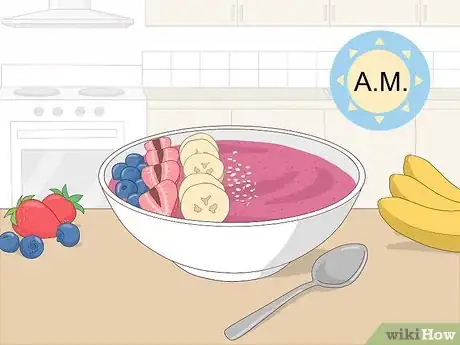

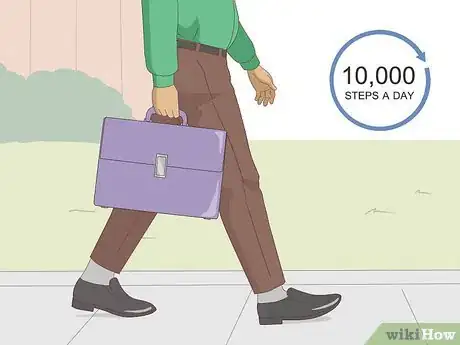
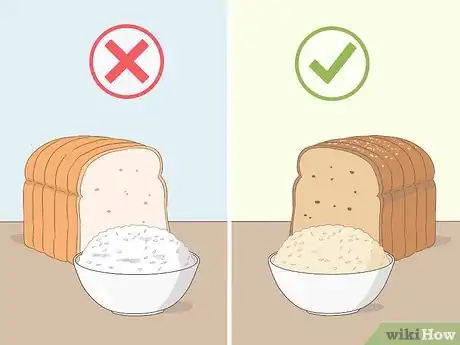
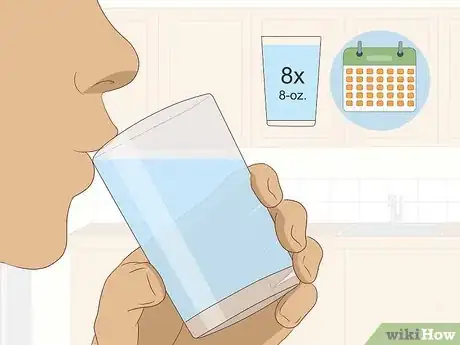
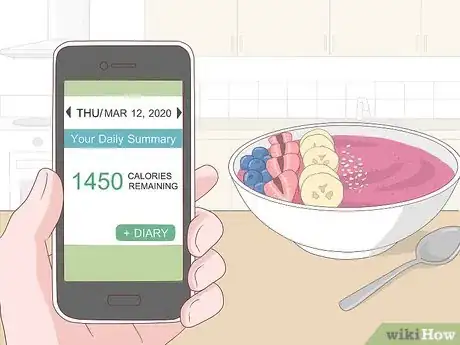

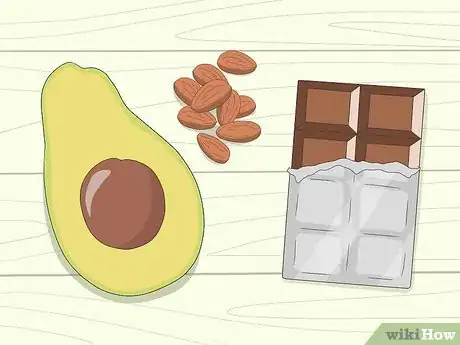
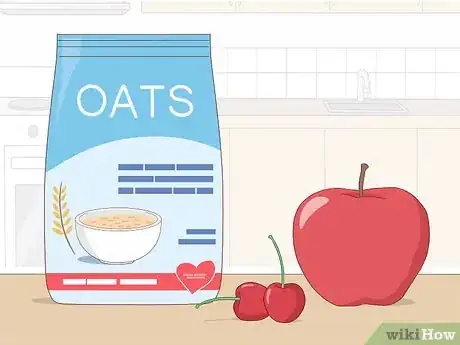
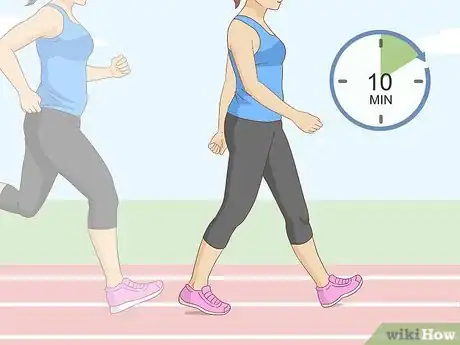
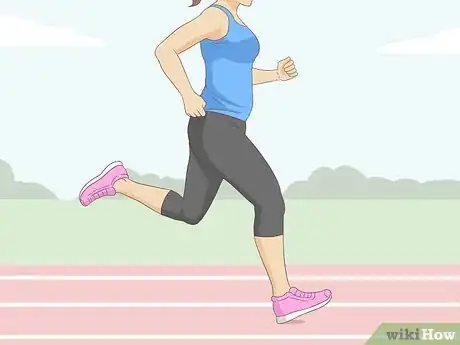
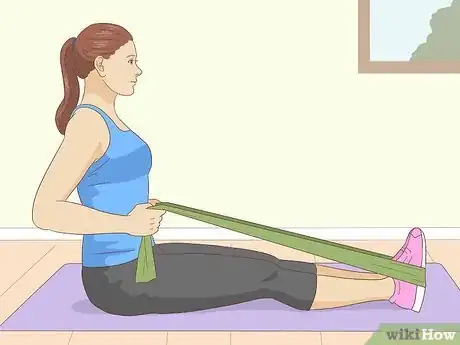
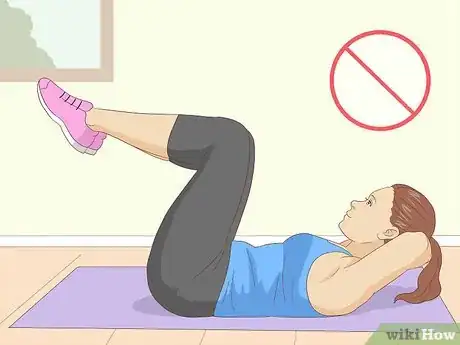
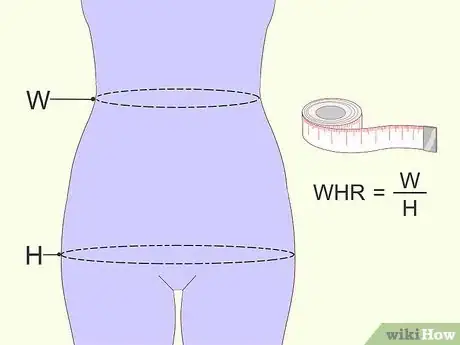
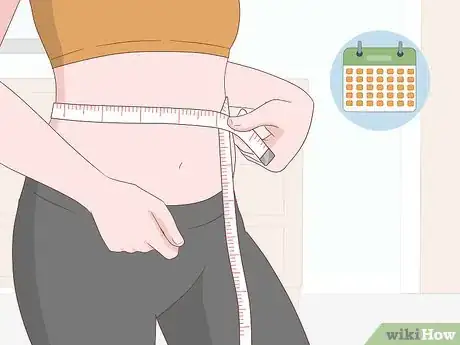
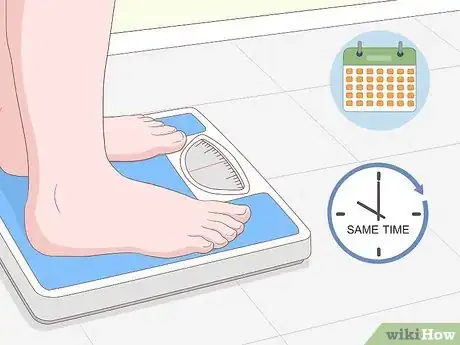


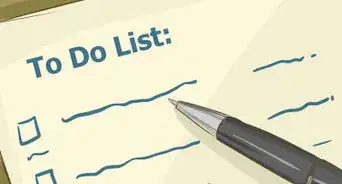



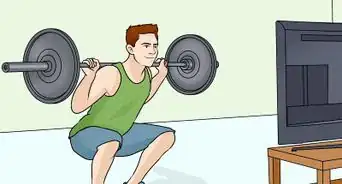
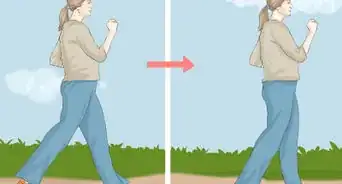
-Step-12.webp)

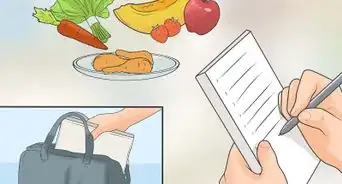
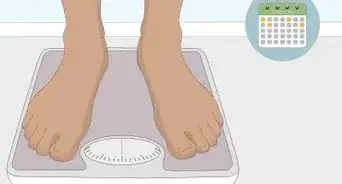

-Step-14.webp)
-Step-14.webp)
